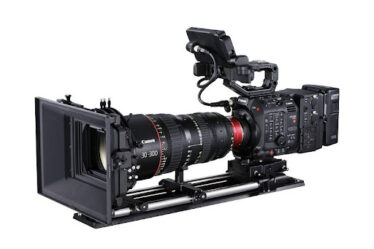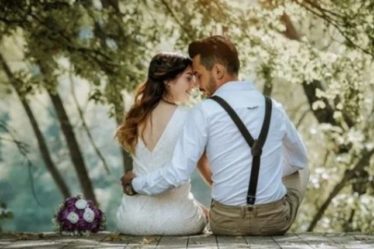
The topic of “How can I make my images more engaging and spectacular?” is one that many landscape photographers frequently wrestle Landscape Photography.
I’d like to provide some shooting tips in this article to assist you to take more captivating pictures. And don’t forget, they don’t demand a huge investment! I constantly attempt to capture the originality of the situation and the setting in my photographs. I have to carefully consider the composition for this and frequently shoot in inclement weather. These two elements, in my opinion, provide interest for the spectator to a photograph. The weather puts the spectator in the photographer’s shoes while the composition draws his attention and draws him into the picture.
As a result, when viewing the image, the spectator starts to feel the same emotions as the photographer did throughout the photoshoot. This effect is challenging to accomplish. Several photographers, including the outstanding Alexander Vershinin, are always acquiring new skills and strategies for compositional landscape photography.
I frequently encounter challenges when photographing landscapes that call for creative solutions. The majority of the time, it relies on the location of the objects I want to photograph as well as the weather at the time of the shooting.
in landscape photography, composition
Starting with composition, I’d want to share with you a method that enables you to enlarge the frame’s perimeter. The so-called foreground, or things that represent the logical “beginning” of the picture, nearly invariably occupy the lowest third of my photographs. This is essential to ensure that the image is seamless and has no empty space below. Typically, these items include flowers, stones, waves smashing on coastal cliffs, and a variety of other things. Picture yourself on a tiny lake’s bank, where vegetation abounds, stones protrude from the water, and a freestanding peak rises in the distance. Even with very wide-angle lenses, it might be challenging to capture all of these items in a single frame. We recommend the best landscape photography training at iphotography.com.
Using a vertorama, also known as a vertical panorama, is a fantastic option if you wish to capture such a picture. The camera must be held horizontally and moved frame by frame around the vertical axis from top to bottom or vice versa. Be careful and make sure the new frame at least 30% overlaps the old one. Also, to prevent frame inconsistencies when cutting, I suggest that you overlap the foreground by 40–50% when it is very close to you.
Imagine a broad view of the valley in front of us, but the focal length is insufficient to fit everything within one frame. Horizontal panning will be useful in this situation because it will let you “flip” the valley 180 degrees. Most people have probably seen lengthy, narrow pictures with a 180–360 degree angle. Such a shot is challenging for the viewer to understand due to its overwhelming richness and perspective distortion, thus it does not necessarily look lovely.
As a result, I do not suggest using excessive panning to create a unique frame. When I create a horizontal panorama, I position the camera vertically, move it horizontally, and produce each frame while keeping in mind the 30% overlap.
There is another significant benefit to utilizing this technique in addition to the panning’s ability to fit everything in one frame. Since the image is made up of three, four, or even more frames, it has more detail, which will improve how viewers perceive it. Looking at a picture with the tiniest details is usually interesting and enjoyable.
Focus stacking when photographing landscapes
We must recall the example with the mountain lake and flowers in the foreground in order to grasp the essence of this strategy. Consider that you want to capture this scene right now, with flowers in the foreground and the mountain in the background. How then, if the blooms are right up against the front lens?
The first thing you’ll try in this situation is to restrict the aperture to its maximum setting or close to it. Even so, you won’t be able to pay attention to the mountain and the flowers at the same time. We should decide what to do.
I only employ this method when it is impossible to focus on both the backdrop and the foreground at the same time, even with big apertures, because the foreground subjects are very near the front lens. After each adjustment of the focusing ring, exposures must be taken. I suggest mounting your camera on a tripod and using a cable release or release timer if you are a novice. Hence, there will be little likelihood of error while using focus stacking.
Make sure the things in the frame aren’t moving or shifting too much before employing this technique.
Another focus stacking method for landscape photography
There is another method, but few individuals employ it. Thus, this method is for photographers who don’t mind being referred to as “photoshop.”
The basic idea behind this technique is to take pictures of the same scene using various focal lengths, then edit the photos together.
Why is it required? This method is used because, at the focal lengths used to capture the foreground, the distant subjects become insignificant. If you are planning to shoot everything with a wide-angle lens, you have probably observed that the main subject, which is typically in the distance, shrinks in size in relation to the foreground.
What then did you do in that circumstance? Either you take the picture as-is, losing all sense of the context of the frame, resulting in an image with unnatural object balance and proportions, or you don’t take the picture at all, which is even more irritating. Is it not?
These issues are avoidable, and I’ll explain how. The complete frame is first taken in the initial format that we want. Looking at the final image, we can observe that the main topic is little and doesn’t appear to be a top priority. This is due to the fact that it is far away from the shooting point—the following step. In order to capture the main item at the necessary size, we must take a second frame. To accomplish this, use the zoom to enlarge the scene and, if necessary, lift the camera a bit to improve the composition. As a result, in the second shot, the main item will be “normal” size. Moreover, we will forfeit the
As a consequence, we will receive two photos, of which we must select the bottom (the foreground and the middle ground) and the top (our primary item) in order to combine them in the photo editor using masks to create the whole and balanced photo that we were after.
The results I mentioned at the beginning of the essay are accomplished using the specified approaches. Before using Photoshop, my images become more fascinating and effective.
Understanding what you are shooting and why is the most crucial element to which I constantly draw everyone I have to shoot’s attention. Once you realize this, choose a shooting technique that won’t be Landscape Photography.
You can also read about: The Our Family Lifestyle Leads

